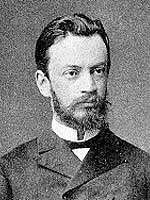Grigory Grumm-Grzhimaylo

Grigory Yefimovich Grumm-Grzhimaylo (Russian: Григо́рий Ефи́мович Грумм-Гржима́йло, 1860–1936) was a Russian entomologist, best known for his expeditions to Central Asia (Pamir, Bukhara, Tian-Shan, Kan-su, and Kukunor), West Mongolia and Tuva, and the Russian Far East. In botanical literature his name is sometimes spelled as Grigor Efimowitsch Grumm-Grzhimailo.
Life and work
Born in St. Petersburg, his early interest was in the phylloxera problem in the vineyards of N. Y. Danilevsky. He wrote his first scientific work at the age of 21 on some lepidoptera of the Crimea (1882, vol. 8 of the 'Proceedings of the Russian Entomological Society).
He was associated with Professor M. N. Bogdanov at the St. Petersburg Museum and contributed many of his own collections to it. He also studied the collections of the museum that had been made by Nikolai Przhevalsky, Grigory Potanin, Pyotr Semyonov-Tyan-Shansky, and other explorers of Central Asia.
From 1882, Grumm-Grzhimaylo studied Lepidoptera from the Bessarabia, Podolia Governorate, Crimea, and the Baltic and got interested in zoogeography. While collecting near Sarepta, he met the German collector Rückbeil. He also met the Grand Duke Nicholas Mikhailovich Romanov who suggested that he should publish his work. He also promised his support for an expedition to the Pamirs. In 1884, he started his first Pamir expedition on which he visited the Alai Mountains, ascending the Trans-Alai range via Pass Tersagarsky to reach the upper Muksu River to reach Fedchenko's glacier. He visited Lake Karakul and returned. He collected 12,000 specimens, thirty of which were new to science. Spurred by the interest to his work, he made a second expedition in 1885 visiting Karateghin, Darvaz, Bukhara Khanate, Ghissar, Kulyab, Beldzhuan, Shakhrisiabz, Karshi, Guzara, Shirabad, Kabadian, and Kurgan-Tyube. This time he collected 20,000 specimens of insects.
His third expedition was in 1886 along the Kara-Darya, via Pass Kugart, then up along the Naryn valley to the Narynsky Fortress (now the town of Naryn), and from there to the south toward At-Bashi and further to the southwest along the broad valley of At-Bashi River, by the At-Bashi Mt. Range, along the Great Silk Route to Tash-Rabat and Lake Chatyr-Kul. They went until Kashgar and then via Pass Irkeshtam and back to Osh.
The expeditions of the brothers between 1889 and 1890 were initially never for birds or large animals. Their aims included obtaining specimens of the Mongolian wild horse and they were afraid that shooting would frighten the animals away. After securing two wild horses near Gushen (44°N 90°30'E), they succeeded in collecting 1048 bird specimens. Their expedition covered 8600 km (5400 mi).[1]
He made several more expeditions in the succeeding years but he later lost much of the early interest in entomology owing in part to a conflict with the sponsor of his expeditions. A term was that the materials he collected were to go to Grand Duke Nicholas Mikhaylovich Romanov, but he needed a private collection. He was accused of embezzling material and financial difficulties made him sell part of his collection to Henry John Elwes.
He was awarded the Constantine Medal in 1907 by the Imperial Russian Geographical Society. [2]
Publications
- Partial list
- Novae species et varietas Rhopalocerum Horae Soc. ent. Rossicae, 22: 303-307 (1888)
- Le Pamir et la faune lépidoptérologique. Mém. lépidop. Ed. N. M. Romanoff 4 volumes 576 p., 21 pl. (1890)
- Lepidoptera nova in Asia centrali novissime lecta et descripta Horae Soc. ent. Ross. 25 (3-4): 445-465 (1891)
- Lepidoptera nova vei parum cognita regionis palaearcticae. I. Ezhegod. Zool Mus. Imp. Akad. Nauk, Ann. Mus. Zool. Acad. Imp. Sc. Volume 4 (1899) (in Russian).
- Lepidoptera nova vel parum cognita regionis palaearcticae. II. Ezhegod. Zool. Mus. Imp. Acad. Nauk, Ann Mus. Zool. Acad. Imp. Sc.,Volume 7 (1902) (in Russian)
Collections
Many of Grumm-Grzhimaylo's specimens of Lepidoptera and Coleoptera are in the Zoological Museum in St. Petersburg. Other specimens were sold to H.J. Elwes.
Notes
- ↑ Rodolphe Meyer De Schauensee 1984. The Birds of China. Oxford University Press
- ↑ "Constantine Medal of the IRGS". Russian Geographical Society. Retrieved 25 August 2015.
- ↑ IPNI. Grumm-Grzhim.
References
- Grieshuber, J. & Churkin, S. (2003a): Grum-Grshimailo's journey through China with notes on some Colias taxa. Helios IV: 224-243, 1 map.